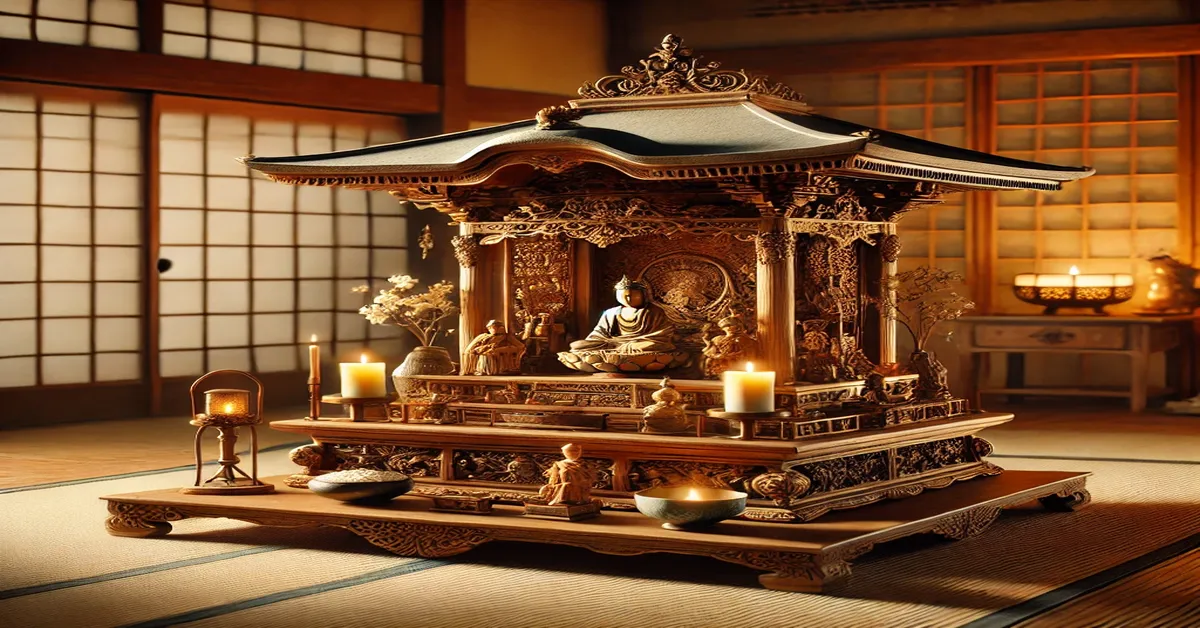Discover the Rich Heritage of the Japanese Antique Home Shrine

In Japan, the japanese antique home shrine stands as a profound symbol of spiritual devotion and cultural tradition. Rooted deep in Japan’s history, these shrines – whether kamidana or butsudan – serve not just as religious artifacts but as vital links to ancestral reverence, cultural identity, and personal spirituality. Exploring the history, types, features, and care of antique Japanese home shrines reveals their importance in daily life and their continued relevance in modern homes. This comprehensive guide aims to illuminate the beauty, significance, and preservation of these cherished relics.
History and Cultural Significance of Japanese Antique Home Shrines
1.1 Origins of Home Shrines in Japan
The tradition of maintaining japanese antique home shrines dates back over a thousand years. Early practices stem from both Shinto and Buddhism, which profoundly influenced Japanese spiritual life. In ancient Japan, households built small altars to worship kami (deities) or Buddha, serving as focal points for prayer, offering, and ancestral veneration. These shrine practices were integrated into daily routines, reflecting an intrinsic relationship between spiritual beliefs and household life.
Over centuries, these shrines evolved from simple wooden platforms to intricately crafted objects, mirroring Japan’s rich artistic traditions. The Heian period (794-1185) saw the first formalized use of kamidana, while the Edo period (1603-1868) marked significant growth in shrine craftsmanship, decoration, and regional variations.
1.2 Role in Japanese Household Life
In Japanese culture, antique home shrines serve as more than mere religious symbols—they act as protective entities and blessings for families. Worshippers regularly perform rituals, offer rice, sake, and sakaki branches, and seek spiritual harmony. These practices foster a sense of continuity and cultural identity, connecting generations through shared rituals and respect for ancestors.
Beyond spiritual protection, these shrines symbolize cultural preservation, maintaining traditional craftsmanship and religious customs within modern household environments.
1.3 Historical Periods Influencing Shrine Designs
The design of japanese antique home shrines reflects various historical periods:
- Edo period: Characterized by elaborate craftsmanship, decorative carvings, gold leaf accents, and refined materials, reflecting stability and prosperity.
- Meiji era (1868-1912): Adaptations for modernization, blending traditional and Western influences, often simplifying designs for more practical use.
- Post-war period and modern times: Minimalist approaches emerge, but many families preserve antique styles for their cultural value, integrating them into contemporary interior design.
2. Types of Japanese Antique Home Shrines
2.1 Kamidana (God Shelf)
The kamidana is a small, elevated shelf placed in homes to worship kami. It functions as a miniature shrine, typically made of wood and covered with decorative elements. In traditional settings, a kamidana is positioned high on a wall, often in the kamidana corner, and serves as a daily focal point for offerings and prayers. The size can vary from a few inches to over a foot, depending on space and tradition.
2.2 Butsudan (Buddhist Altar)
The butsudan is a Buddhist altar used predominantly in households practicing Buddhism. It is usually larger than a kamidana and features intricate carvings, gilding, and multiple compartments. Butsudan houses statues of Buddha, bodhisattvas, and memorial tablets, along with offerings of incense, candles, and flowers. The design and decoration reflect regional and stylistic variations, with some ancient butsudan showcasing exquisite craftsmanship.
2.3 Other Regional or Traditional Variations
- Zushi: Portable shrines or small cases with miniature icons, used especially in rural or traditional settings.
- Local shrine styles: Variations include shrine configurations unique to specific regions, incorporating local materials, motifs, or architectural features.
3. Key Features and Components of Antique Home Shrines
3.1 Materials and Craftsmanship
Antique japanese home shrines display remarkable craftsmanship, using materials such as high-quality wood, lacquer, and delicate gold leaf accents. Traditional carpentry techniques like joinery without nails and intricate carvings emphasize durability and artistic finesse. Some shrines incorporate linen textiles, silk paintings, or inlay work, reflecting regional artistic styles.
3.2 Design Elements
The architectural style of antique shrines varies from simple, unadorned structures emphasizing spiritual purity to highly ornate pieces with elaborate carvings and decorative motifs. Features often include curved eaves, painted panels, and decorative tassels. The ornamentation may include symbols of protection, prosperity, and peace, making each shrine unique and culturally significant.
3.3 Sacred Items and Offerings
- Shintō offerings: sakaki branches, rice, sake, and fruits.
- Buddhist offerings: incense, candles, statues, and prayer beads.
These items are carefully chosen and ritualistically presented during prayers, encapsulating profound spiritual meaning.
4. How to Recognize and Authenticate Antique Japanese Home Shrines
4.1 Characteristics of Authentic Antique Shrines
Authentic japanese antique home shrine exhibits signs of age such as patina, wear, and craftsmanship details. For instance, natural wood discoloration, hand-carved details, and traditional finishing techniques point to genuine age. The aged look often enhances the shrine’s aesthetic and value.
4.2 Common Forgeries and How to Avoid Them
Modern reproductions may mimic antique styles but often lack authentic craftsmanship or age indicators. Look for machine-made elements, overly pristine surfaces, and signs of recent manufacturing. Consulting with experts or referencing provenance can help verify authenticity.
4.3 Resources for Authentication
- Japanese cultural museums
- Professional antique appraisers specializing in Asian artifacts
5. Preservation and Care of Antique Home Shrines
5.1 Proper Cleaning and Maintenance
Gentle cleaning with soft brushes or cloths, avoiding harsh chemicals, preserves the delicate surfaces. Regular dusting and careful handling prevent deterioration. Use natural oils or waxes suitable for antique wood to maintain luster.
5.2 Storage and Display Tips
Place shrines in stable environments away from direct sunlight, high humidity, and temperature fluctuations. Environmental control minimizes damage. Display on sturdy, level surfaces, and consider using display cases for added protection.
5.3 Restoration and Repair
Restoration should be performed by qualified conservators familiar with traditional techniques. Any repairs must respect the original craftsmanship to maintain the shrine’s authenticity and value.
6. Incorporating Antique Home Shrines into Modern Homes
6.1 Respecting Traditional Practices
Even in contemporary settings, maintaining routine prayers or offerings keeps traditional spiritual practices alive. Respect the shrine’s significance and handle it with reverence during rituals.
6.2 Display Ideas
Create a dedicated nook or altar space that blends seamlessly with modern interior design. Using minimalistic backgrounds or incorporating natural elements like plants can enhance the shrine’s presence while respecting traditional aesthetics.
6.3 Cultural and Lifestyle Significance
Incorporating antique japanese home shrines in modern lifestyle fosters a sense of connection to heritage, promotes mindfulness, and enriches personal identity through cultural preservation.
7. Where to Find and Purchase Antique Japanese Home Shrines
7.1 Reputable Dealers and Antique Shops
- Specialized Japanese antique shops in Japan or abroad
- Established online antique markets such as Tokyo Art Beat
7.2 Auctions and Exhibitions
Attending specialized auctions, like Sotheby’s or Bonhams, often offers opportunities to acquire authentic japanese antique home shrines. Cultural festivals and traditional fairs also showcase local artisans and rare pieces.
7.3 Online Marketplaces
When purchasing online, verify seller credentials, request provenance documents, and request detailed photographs. Be cautious of overly low prices that may indicate reproductions or forgeries.
Websites like eBay or specialized antique portals offer options, but due diligence ensures a safe purchase.
Summary Table of Key Points about Japanese Antique Home Shrines
| Feature | Description | Typical Materials | Common Design | Historical Significance |
|---|---|---|---|---|
| Types | Kamidana, butsudan, regional variations | Wood, lacquer, gold leaf | Simple to elaborate styles | Deeply rooted in cultural practices |
| Materials | High-quality craftsmanship | Natural wood, lacquer, textiles | Carvings, inlays, painted motifs | Reflect regional artistic traditions |
| Care | Gentle cleaning, environmental control | Natural oils, soft cloths | Stable display environment | Preserves spiritual and historical value |
Frequently Asked Questions (FAQs)
- What is the difference between a kamidana and a butsudan?
A kamidana is a small Shinto shrine typically placed in homes for kami worship, while a butsudan is a Buddhist altar used for memorials and Buddhist rituals. - How can I identify an authentic antique japanese home shrine?
Look for signs of age such as natural patina, craftsmanship details, and signs of wear consistent with age. Consult experts and provenance documentation. - How should I care for my antique shrine?
Clean gently with soft brushes or cloths, control environmental factors, and seek professional help for repairs or restoration. - Can I incorporate an antique home shrine into a modern interior?
Yes, placing it thoughtfully in a dedicated, unobtrusive space respects tradition while complementing modern design. - Where is the best place to buy an antique japanese home shrine?
Reputable antique shops, specialized online dealers, and reliable auction houses are safe options. - Are antique shrines valuable?
Yes, especially those with historical significance, craftsmanship, and good provenance. Their value increases with age and authenticity.





